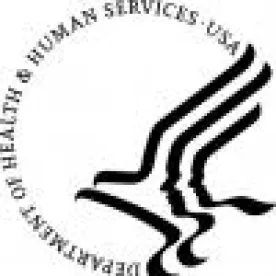Certifications, Acknowledgments and Reports
The CARES Act[1], passed by Congress and signed into law on March 27, 2020, provides $100 billion for the Public Health and Social Services Emergency Fund (“Relief Fund”) to support eligible health care providers. Less than a month later, Congress passed the Payroll Protection Program and Health Care Act[2], providing an additional $75 billion to the Relief Fund, raising the total funds available to $175 billion. As of the end of April 2020, the Department of Health and Human Services (“HHS”) released to providers two tranches of Relief Funds totaling $50 billion.[3] HHS disbursed the first $30 billion tranche (“Tranche 1”) between April 10 and April 17, 2020. Currently, HHS is disbursing the second $20 billion tranche (“Tranche 2”). Because these are grant funds – not loans – repayment is not required. What HHS requires is that the Recipients attest to and follow the Relief Fund’s Terms and Conditions. Before we turn to the Terms and Conditions, it is important to understand HHS’ Relief Fund disbursement process.
Relief Fund Disbursement Process
HHS disbursed the Tranche 1 Relief Funds as well as some of the Tranche 2 Relief Funds directly to providers participating in Medicare Part A and Part B. (“the Recipients”). Other Recipients must apply for the Relief Funds through the HHS’ on-line portal. No matter how the Recipient received the funds, either through direct payments or through the on-line application, all Recipients must attest to HHS’ published Terms and Conditions through the HHS on-line portal within 30 days after receiving the Relief Funds. Each tranche requires a separate attestation. If the Recipient retains the funds for at least 30 days without contacting HHS regarding the funds’ remittance, HHS deems the Recipient to have accepted the Terms and Conditions discussed below. There are two important considerations in determining whether to accept these funds:
-
The Terms and Conditions for Tranche 2 Relief Funds differ in several respects from the Terms and Conditions for the Tranche 1 Relief Funds; and
- The Terms and Conditions listed provisions are not exhaustive and Recipients must also comply “with any other relevant applicable statutes and regulations”.
With this language, HHS can expand compliance requirements at any time. Below we focus on HHS’ published Terms and Conditions for both Tranche 1 and 2.
The Terms and Conditions – Certifications, Acknowledgements and Reports
For the $30 billion Tranche 1, the Recipient must certify that the Recipient will only use the Payment to prevent, prepare for, and respond to coronavirus, and that the Payment shall reimburse the Recipient only for health care related expenses or lost revenues that are attributable to coronavirus. The Recipient must also certify that:
-
Recipient is not currently terminated from Medicare participation or precluded from receiving payment through Medicare Advantage or Part D
- Recipient is not currently excluded from participation in Medicare, Medicaid, and other Federal health care programs; and
- Recipient does not currently have Medicare billing privileges revoked.
Other required certifications include that:
- The Recipient’s information, both in its Payment application as well as all future Payment information and reports to HHS, is true, accurate, and complete to the best of its knowledge;
- The Recipient will collect out-of-pocket expenses as if all patients were in-network (i.e., will not balance bill); and
- The Recipient will not use the Relief Fund payment to reimburse for expenses or losses that have been reimbursed from other sources or that other sources are obligated to reimburse.
For the $20 billion Tranche 2 Relief Funds, the Secretary of HHS requires the above Terms and Conditions with several additional requirements. First, in order to qualify for the Tranche 2 funds the Recipient must have received funds in Tranche 1.
Next, HHS requires the Recipient to submit to the Secretary General revenue data for calendar year 2018 when applying for a Tranche 2 Payment, or within 30 days after Payment receipt. In addition, in order to retain the Relief Fund payments under Tranche 2, the Recipient consents that the Department of HHS may publicly disclose the Recipient’s payment from the Relief Fund. Further, the Recipient must acknowledge that this disclosure may allow third parties to estimate the Recipient’s gross receipts or sales, program service revenue, or other equivalent information. Because eligibility for Tranche 2 Relief Funds requires that the Recipient received Tranche 1 Relief Funds, the acknowledgment that HHS may publicly disclose Relief Fund payments could apply to both Tranche 1 and Tranche 2 Relief Fund payments.
Reports and Future Program Instructions –
The Terms and Conditions require Recipients to submit Quarterly Reports as well as reports the Secretary of HHS determines “are needed to ensure compliance with” the Payment conditions. The reports shall be in the form and include the content specified by the Secretary of HHS as required by future program instructions.[4] HHS requires the Recipient to maintain appropriate records and cost documentation, including, as applicable, the documentation described in 45 CFR §75.302 – Financial Management and 45 CFR §75.361 through 75.365 – Record Retention and Access, as well as other information required by future program instructions. In other words, the reports to HHS may change and the Recipient must comply with those changes.
Non-Compliance with the Terms and Conditions – Recoupment and More
The Secretary of HHS can recoup some or all of the Relief Fund payment for non- compliance with any Term or Condition. HHS lists more severe penalties for deliberate omission, misrepresentation, or falsification of any information contained in the Payment application or future reports. Punishment includes criminal, civil, or administrative penalties including but not limited to:
-
Revocation of Medicare billing privileges,
- Exclusion from federal health care programs, and/or
- Imposition of fines, civil damages, and/or imprisonment.
Given the Relief Fund’s extraordinary size, it is likely that the government will closely audit Recipients to ensure the propriety of the Relief Fund’s expenditures and compliance with the Terms and Conditions. Keep in mind that all the Terms and Conditions apply not only to the Recipient but also flow-down to Sub-Recipients and Subcontractors, if any.
Although HHS issued Terms and Conditions for the Relief Funds, it is clear that HHS considers these Terms and Conditions as a starting point for compliance and reports on the use of these funds. Epstein Becker & Green continues to monitor HHS’s process for distributing Relief Funds, Terms and Conditions and other related actions for any changes that may affect our clients. In our next post, we will review the Terms and Conditions’ impact on how the Recipient may use the Relief Funds.
[1] Pub. L. No. 116-136
[2] Pub. L. No. 116-139
[3] HHS is disbursing additional portions of the Relief Funds targeted at providers that did not receive funds through the first two distributions or that have higher needs. These include allocations for: COVID-19 high impact areas ($10 billion), rural providers ($10 billion), and Indian Health Services ($400 million). See HHS CARES Act Provider Relief Fund webpage, https://www.hhs.gov/coronavirus/cares-act-provider-relief-fund/index.html (Accessed May 6, 2020).
[4] This applies to Recipients that receive more than $150,000 total in funds under the Coronavirus Aid, Relief, and Economics Security Act (P.L. 116-136), the Coronavirus Preparedness and Response Supplemental Appropriations Act (P.L. 116-123), the Families First Coronavirus Response Act (P.L. 116-127), or any other Act primarily making appropriations for the coronavirus response and related activities. Within 10 days after the end of each calendar quarter, the Recipient submits the report to the Secretary of HHS and the Pandemic Response Accountability Committee.




 />i
/>i
